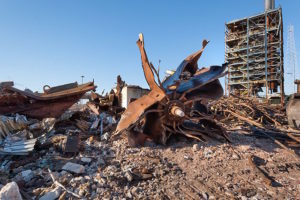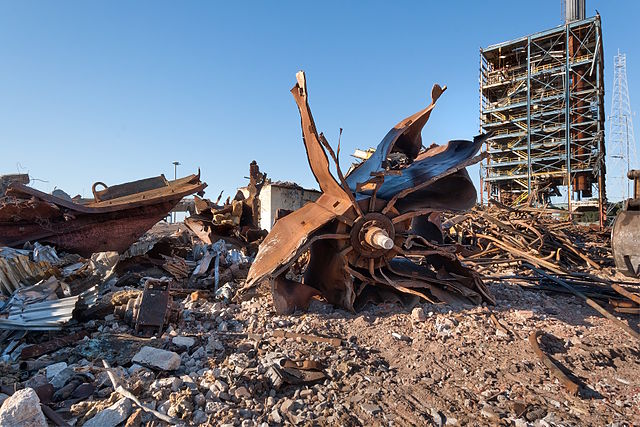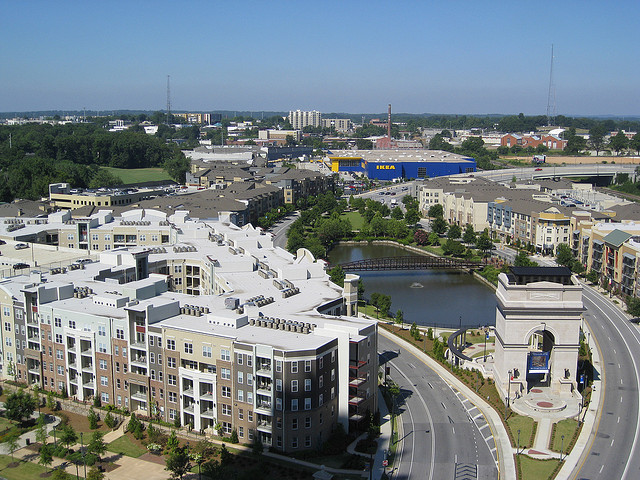
Demolition of the George E. Turner Power Plant, photography by Wikimedia Commons user MrX, CC BY-SA 3.0.
With such an ominous sounding title, you might think a conference called Plant DDD could be something scary. In fact, DDD is an acronym for decommissioning, decontamination, and demolition, the processes involved with retiring power plants. The Plant DDD conference, held in Charlotte, North Carolina, January 13–15, 2015, was organized by Infocast.
You might be wondering why someone from Greenfield Advisors was presenting at this conference. The answer is that when power plants are decommissioned, real estate is left behind. That real estate now can have a different highest and best use (H&BU), a different zoning designation, and a different set of ingress and egress points along its boundaries, among others. In fact, of the four speakers and moderator on my panel discussion of evaluating coal ash remediation solutions, only one worked at a firm that had a technology capable of converting coal ash into a reusable, marketable product. The other four of us comprised two attorneys, an engineer, and me.
The panel members had a fruitful discussion about technical remediation solutions and how that fit into the U.S. EPA’s December 2014 final ruling on coal ash as a RCRA Subtitle D solid waste (coal ash was not classified as a hazardous waste). While the other panel members focused on their areas of specialty, I focused on a few key things to consider when a decommissioned power plant comes up for redevelopment.
First, an effort to repurpose a decommissioned power plant requires the removal of any environmental contamination so that the public perception of the project and the site is positive. Second, a decommissioned power plant site likely will have a change in its H&BU, which affects the end-use of the property. For example, the panel discussed several former power plant sites that were now used for soccer fields or golf courses. This is a radical change in the H&BU of a property that requires careful consideration by developers as to how this change will affect proximate properties. Local taxing authorities will also be very interested in changes to H&BU because this ultimately affects the tax base and county revenues.

The redeveloped Pratt Street Power Plant, photo courtesy of G. Edward Johnson via Wikimedia Commons, CC BY 3.0.
Third, I mentioned that the H&BU determination is important because the property owner will want to remediate to the level that enables the proposed end-use to occur.
Fourth, I discussed the idea that the decision of what to do with a property (i.e., sell it, redevelop it, or leave it vacant) is based on an analysis of benefits and costs of the project. Often, folks who do these analyses without professional economists looking over their shoulders miss significant opportunity costs that frequently change the benefit-cost calculus.
The expected costs of going through litigation in the event of an ash pond breach must also be considered when deciding whether to keep open or close an existing ash pond. These kinds of costs not only require a determination of the probability that an event like this will occur, but also the magnitude of impact of the event if it happens.
What do you think about the added benefit of having professional consultants on projects like this? Please leave your comments.






Saved as a favorite, I like your website!